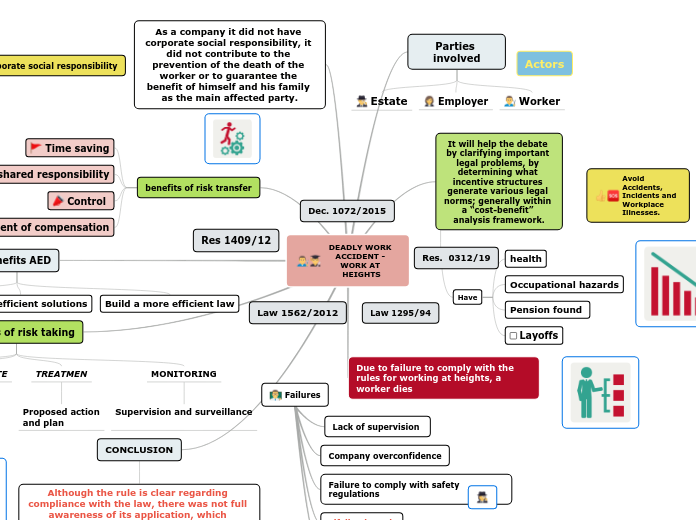DEADLY WORK ACCIDENT - WORK AT HEIGHTS
Parties involved
Estate
Employer
Worker
It will help the debate by clarifying important legal problems, by determining what incentive structures generate various legal norms; generally within a “cost-benefit” analysis framework.
Have
health
Occupational hazards
Pension found
Layoffs
Due to failure to comply with the rules for working at heights, a worker dies
As a company it did not have corporate social responsibility, it did not contribute to the prevention of the death of the worker or to guarantee the benefit of himself and his family as the main affected party.
benefits of risk transfer
Time saving
shared responsibility
Control
Payment of compensation
Benefits AED
Create behavioral incentives
Identify efficient solutions
Build a more efficient law
benefits of risk taking
IDENTIFY
What how when,
where and why?
ANALYZE - EVALUATE
Possibility and
Consequences
TREATMEN
Proposed action
and plan
MONITORING
Supervision and surveillance
CONCLUSION
Failures
Lack of supervision
Company overconfidence
Failure to comply with safety regulations
Lifeline breach
Company negligence
Avoid Accidents, Incidents and Workplace Illnesses.
Actors
The company didn^t analyze the cost benefit in its actions as a company in the face of non-compliance with the lifeline, which generated the worker's fatal accident.
Res 1409/12
Law 1562/2012
Res. 0312/19
Dec. 1072/2015
Law 1295/94




